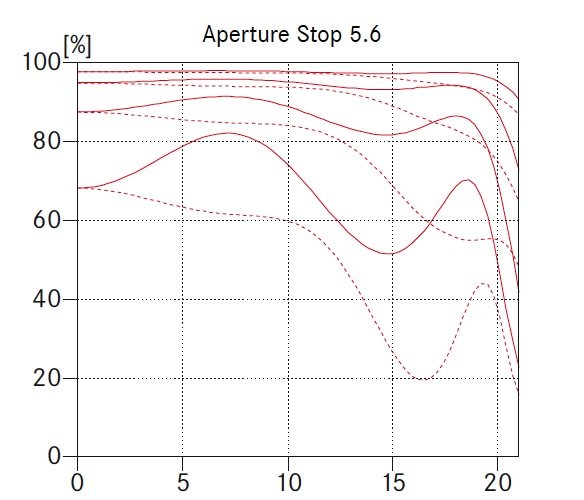LUIS A GUEVARA
Well-Known Member
- Joined
- Nov 21, 2008
- Messages
- 59
Luis,
I apologize for my serious arithmetic error. My calculation is two dimensional; actually the same as yours. I mistakenly divided by the 1.5 crop factor. What I attempted to do was to calculate the number pixel along the horizontal axis, thus:
Total pixels = Nx*Ny, but Nx=1.5Ny, so it should have been,
Nx^2 = 1.5*15.3MP => Nx= 4800 appr.
but all of this is an aside from my main point. That is that if you look at lens specs from mfgrs. they typically spec sharpness wide open at 30 line pair/mm as a function of radial displacement etc.
They specify Modulation Transfer (MTF) , which is a measure of how a certain Contrast is Transfered by the lens to the Film or Sensor Plane , and it is measured with a traveling slith. Test charts are for Amateur use .
And since all lenses lose sharpness at large distances off axis, the smaller APS-C sensor is less demanding in this regard. It is the difficulty of manufacturing a lens that's sharp over the larger sensors, that drives up the price substantially.
Not True . APS-C cameras use APS-C lenses to save money in Glass and therefore off axis deterioration exist just as in any other lens . What is true is that if you use a lens designed for FULL FRAME , such as a LEICA-R , then the APSC sensor will be using only the so called "SWEET SPOT" . The center of the lens . This is conceptually as IF stopping down to a smaller aperture , to use only the center portion , but USING THE LENS AT FULL APERTURE.
As to measuring lens resolution, it's easier said than done in the field. I'm sure you are familiar with the Imatest Program, for example, which has been devised to do such measurements. The problem is that you always get a kind of convolution of things when you try to analyze the response to various step function targets. So, as an example, if both the lens and sensor had equal resolution on axis, say, The convolved measured resolution would be down by a factor of 1.4 or so. The only way to accurately measure a lens' resolution is to do some sort of scanning slit measurement.
I already answered this point . I assume that you are using the technical word "Field" to refer to the periphery of the lens, same as I am . Serious Bench tests of a lens will be based on MTF , by using a Traveling Slit testing machine , and tests will be performed on all axis as well as Tangentially to measure , among other things , Stigmatism
Convolution of lens MTF and Sensor MTF , is already accounted for in the test bench and it is not really a problem for a Digital Imaging expert or for any Optician that are well versed on Fourier Transforms and the like.
Let me end by asking the question;
Why do you think Sigma states that it has over 40 lenses suitable for working into the SD1?
Sigma has proved to be more deceptive than any other company from Japan. Most of the line up of Sigma lenses was designed for their previous models , that were using sensors that were SMALLER than APS-C. The SD1 sensor is a true APS-C and the current line up of lenses , with the exception of the few remaining Full Frame lenses designed for the Film Cameras , will not perform well unless well stopped down , to eliminate the rays of light coming from the periphery of the lens.
Take a look at the following chart . The purple rectangle, marked Foveon ,indicates the Old Foveon sensor . Compare that with the next step up for APS-C as implemented by Canon and Nikon.
Please observe the big difference that exists with the APS-H Specification that Canon uses . That is what Sigma should use in their next model if they cannot afford to go Full Frame.
View attachment 2203
The short answer to your last question is a no brainer , Sigma wants to sell its new camera and when they stated that the crop factor of the SD1 was only 1.5 instead of the old 1.7 , lots of well informed people posed that question and Sigma avoided the issue by making a statement about how many lenses will FIT the SD1
They can get away with it because even those lenses will not perform well on the larger sensor , still the much improved SD1 camera will outperform the same lens if mounted in any of the previous models.
The good thing is that the camera would perform admirably better if converted to accept a Full Frame lens such as a Leica-R or Zeiss ZF (Nikon-F).
If someone has the money to buy an SD1 that would be the thing to do.
Luis
SIGMA CUM LAUDE
Please click here to visit our new Forum
--
http://photo.net/photos/Luis-A-Guevara
http://www.pbase.com/luis_a_guevara/galleries
http://gallery.leica-users.org/v/LUIS+A+GUEVARA/
http://www.summiluxart.com/
http://www.sigmacumlaude.com/



